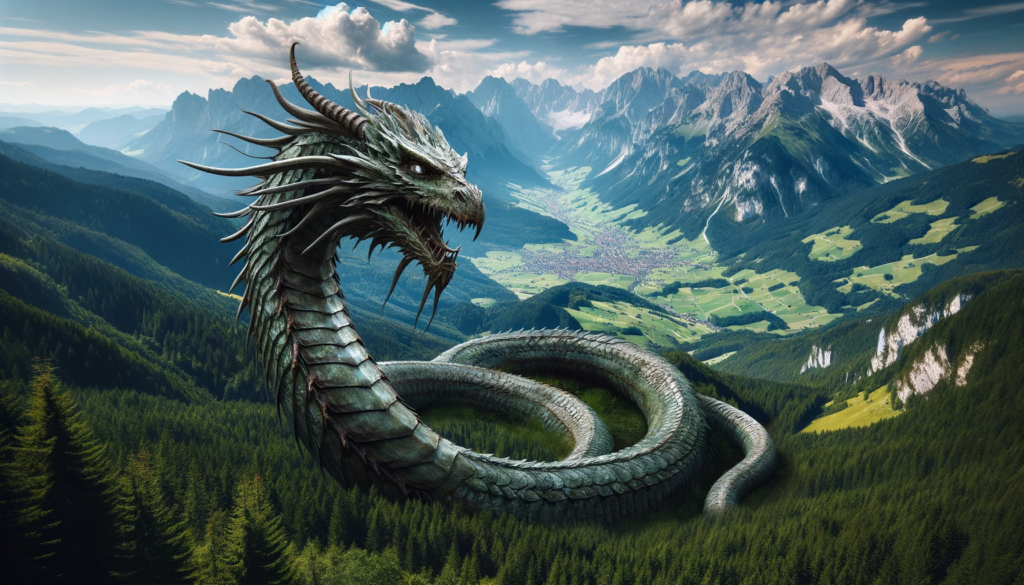Introduction to the Lindwurm
Nestled within the stunning Alpine landscapes of Austria and Slovenia lies a creature of legend and lore, the Lindwurm. This mythical serpent, often depicted as a fearsome dragon-like creature, has fascinated generations with its intriguing stories and mysterious origins. In this article, we will delve into the rich history, cultural significance, and enduring allure of the Lindwurm.
The Lindwurm in Legend
The Lindwurm, also known as the Lindworm or Ljubljana Dragon, is a creature deeply rooted in the folklore of the Alpine regions. It’s legend is particularly associated with the city of Klagenfurt in Austria and the capital of Slovenia, Ljubljana. According to local legends, the Lindwurm is a fearsome creature that dwells in caves, dark forests, or underwater lairs. Its appearance is described as a serpent or dragon with wings and, in some versions, multiple heads.
One of the most famous Lindwurm legends centres around the founding of Klagenfurt. According to the tale, the Lindwurm terrorised the area, devouring livestock and frightening the local inhabitants. It was only through the bravery of a young man named George that the Lindwurm was defeated. George lured the beast out of its cave with an ox, then slew it in a mighty battle. As a reward, he was granted the honor of naming the town, choosing the name Klagenfurt, which translates to “complaint ford” in reference to the complaining sounds of the Lindwurm.
Cultural Significance
The Lindwurm has not only played a significant role in local legends but has also become a symbol of strength, courage, and resilience for the people of these regions. Its image is proudly displayed on the coat of arms and flags of both Klagenfurt and Ljubljana, serving as a reminder of the heroic deeds of those who faced the mythical beast.

The Lindwurm has also inspired various artistic and architectural creations. In Klagenfurt, you can find the famous Lindwurmbrunnen (Lindwurm Fountain), a stunning statue depicting George’s battle with the Lindwurm, which has become an iconic landmark in the city. Ljubljana, on the other hand, boasts a striking dragon statue atop the Dragon Bridge, which stands as a testament to the Lindwurm’s enduring influence.
Modern Interpretations
While the Lindwurm remains firmly entrenched in tradition, its allure has not waned with time. In modern times, the Lindwurm continues to captivate the imagination of residents and visitors alike. It serves as a symbol of regional identity and a connection to the rich history and folklore of the Alpine regions.
The Lindwurm Festival in Klagenfurt and the Dragon Carnival in Ljubljana are annual celebrations that pay homage to this legendary creature. These events feature colourful parades, performances, and activities that bring the Lindwurm’s mythology to life, ensuring that its stories are passed down to future generations.
The Lindwurm – a Conclusion
The Lindwurm, with its centuries-old legends and enduring cultural significance, stands as a testament to the power of myth and storytelling. Its fearsome image and heroic tales have etched themselves into the hearts and minds of those who call the Alpine regions home. As the Lindwurm continues to inspire festivals, statues, and a strong sense of local pride, it remains a symbol of the rich heritage and enduring spirit of Austria and Slovenia.
For more dragon content please subscribe to the Everything Dragon YouTube Channel or follow us on Instagram




